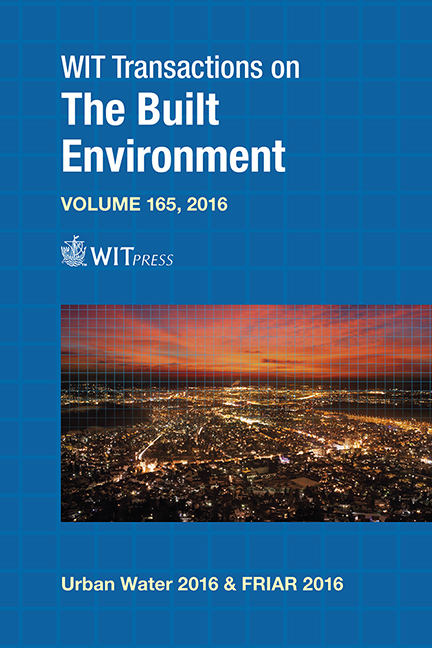Wet Weather Sewerage Management In Korea
Price
Free (open access)
Transaction
Volume
165
Pages
12
Page Range
189 - 200
Published
2016
Size
1,676 kb
Paper DOI
10.2495/UW160171
Copyright
WIT Press
Author(s)
S. Han, C.-H. Lee, J.-S. Yook, J.-G. Han, J.-H. Hwang, I.-H. Choi
Abstract
Korean sewerage policy focused on sewer pipelines and sewage drainage for the prevention of flooding due to rapid urbanization before the 1970s. From the 1980s to the 2000s, the policy focused on publicly owned treatment works (POTW) construction in order to improve water quality. Since the 2000s, Korean sewerage policy has significantly achieved an up to 92% of sewerage service penetration rate through sanitary sewer system rehabilitation, POTW expansion and enhancing treatment processes. However, inflow/infiltration (I/I) to pipelines and manholes which is caused by incomplete sanitary sewer construction has resulted in low sewage quality influent in the POTW. In addition, untreated sewage discharge due to the lack of ability to cope with the influent to POTW during wet weather problems such as combined sewer overflows (CSOs) and sanitary sewer overflows (SSOs) are caused by compact capacity of the POTW according to the economical facility plan and confined policy management on dry weather. Moreover, it affects the water quality deterioration problem for public water. In this report, we reviewed the comprehensive problems and counter measures of the sewer system including collection, transportation, and treatment facility of sewage and established wet weather sewage management. And we have made exemplary sewerage works and derived guidelines for sewer system management during wet weather with two selected cities (Seo-san, Nam-won) in Korea. We are going to enlarge the derived guideline to all POTW (over 500m3/d) in Korea to solve the problem about wet weather flow. Finally, we will be able to protect our water resources sustainably.
Keywords
CSOs, SSOs, inflow/infiltration, wet weather, sewerage treatment, RDII





